Almost 75% of the jurisdictions in our database utilize substance use in their determination of risk levels.
For example, CPAT allocates up to 4 points to “Yes or Unknown Past or Current Problems with Alcohol”. ORAS-PAT allocates the same number of points to “Several Drug Use Problems” as “Three or more Prior Jail Incarcerations.”
Several jurisdictions are using a version of VPRAI that assigns 1 point to the item “Does the defendant have a history of drug abuse,” though it explicitly excludes alcohol from this definition of drug use.1Marie VanNostrand and Kenneth J. Rose, Pretrial Risk Assessment in Virginia A revised version of VPRAI-R assigns 2 points to the item “History of drug abuse.”
Many other tools include prior drug offenses in their risk scores as well.
Even when a tool like the PSA does not include substance abuse or drug use as an item in its tool, mandatory minimum sentencing practices ensure that drug-related factors, such as marijuana and DUI arrest charges, are included implicitly in the way that the tools count convictions and jail sentences.
Including substance use aligns with the legacy from the War on Drugs that led to the enormously disproportionate incarceration rate for people of color.2Lisa D. Moore and Amy Elkavich: Who’s Using and Who’s Doing Time: Incarceration, the War on Drugs, and Public Health, American Journal of Public Health
Including substance use and prior drug arrests and convictions is a racially biased measure, as the rate of arrests and convictions for drug charges are extremely racially disproportionate.
People of color are more likely than white people to be stopped and searched, arrested, and convicted for drug charges, despite similar rates of actual drug use.3Drug Policy Alliance: Race and the Drug War
Half of drug arrests are for marijuana use. Black and White individuals use marijuana at about the same rate, but Black individuals are almost 4 times as likely to be arrested for possession. 4ACLU: Marijuana Arrests by the Numbers
In early 2018, 93% of those arrested in New York City for marijuana possession were people of color.5Innocence Staff: Racial Disparities Evident in New York City Arrest Data for Marijuana Possession, Innocence Project A 2014 California study found that the rate of felony drug charges filed against Black individuals was over twice their actual presence in the state population.6Alyssa C. Mooney, Eric Giannella, M. Maria Glymour, Torsten B. Neilands, Meghan D. Morris, Jacqueline Tulsky, and May Sudhinaraset: Racial/Ethnic Disparities in Arrests for Drug
Possession After California Proposition 47, 2011–2016, American Journal of Public Health, Criminal Justice
In Philadelphia in 2019, Black drivers made up 84% of those searched based on the supposed smell of marijuana in their cars7Samantha Melamed: Philadelphia police are searching more cars for marijuana — but finding less of it, critics say, The Philadelphia Inquirer — and police searches only found marijuana in 12.6% of the time in Black drivers’ cars, compared to 20.3% of the time in white drivers’ cars. Two specific police officers involved in one case had a record of stopping and searching Black drivers seven times as often as white drivers8Samantha Melamed: Philadelphia police are searching more cars for marijuana — but finding less of it, critics say, The Philadelphia Inquirer for the alleged smell of marijuana in their cars.
Utilizing drug abuse and mental health as a risk factor criminalizes substance use addiction.
The War on Drugs has massively increased the number of those incarcerated by creating laws that target drug use and those who have substance use addictions.
According to the National Survey on Drug Use and Health (NSDUH), 21.5 million Americans aged 12 and older battled a substance use disorder in 2014.9Sarra L. Hedden, Joel Kennet, Rachel Lipari, Grace Medley, Peter Tice, Elizabeth A. P. Copello, and Larry A. Kroutil: Behavioral Health Trends in the United States: Results from the 2014 National Survey on Drug Use and Health, Substance Abuse and Mental Health Services Administration
Over half of those in prison meet the medical criteria for addiction. According to the National Institutes of Health, around three-quarters of individuals in a state prison or local jail who suffer from a mental illness also struggle with substance abuse.
Substance abuse is a major public health problem that can be ameliorated through evidence-based public health measures, including education about the disease and its risk factors, screenings, and clinical interventions. Addiction can be treated and managed effectively within routine health care practice and specialty care.10Emily Feinstein, Linda Richter and Susan E Foster: Addressing the Critical Health Problem of Adolescent Substance Use Through Health Care, Research, and Public Policy, Journal of Adolescent Health
The incarceration of these individuals denies them access to critical measures to treat their health challenges. Addressing the root causes of substance abuse is a much more effective way of treating substance use disorders than increasing their risk scores.

